Sugar gliders have a glorious origin history. They have captured the hearts of many animal lovers around the world. In this virtual discussion, we will take a deep dive into the origins of these adorable and acrobatic creatures, tracing their evolutionary journey, exploring their habitat and unique features, unraveling their behavior, and understanding their diet and conservation status. So, let’s embark on this fascinating adventure and learn more about the enchanting sugar gliders!
Table of Contents
Tracing the Evolution of Sugar Gliders
To understand the origins of sugar gliders, let’s take a deep dive into their evolutionary history. The sugar glider, also known as Petaurus breviceps, belongs to the family Petauridae, which also includes the flying squirrel. These small marsupials have thrived in the forests of Australia for thousands of years. Now, let’s explore how these fascinating creatures evolved and adapted to their environment.
Understanding Sugar Glider Taxonomy
We will trace the evolution of sugar gliders by understanding sugar glider taxonomy and delving into more information about these fascinating creatures. The genus Petaurus includes several subspecies, each with its own unique characteristics, and sugar gliders belong to this genus. These small marsupials measure around 5 to 12 inches in length and weigh between 90 to 150 grams. Sugar gliders have a pouch where they carry and nurture their offspring, known as joeys, after birth, like other marsupials.
Sugar gliders are remarkable for their ability to glide through the air using a membrane called the patagium, which extends from their back legs to their front feet.
Taxonomically, sugar gliders are related to possums, kangaroos, and koalas, all of which are marsupials known for their unique reproductive and pouch-bearing nature.
In addition to their unique gliding abilities, sugar gliders are also known for their social nature. They are highly social animals and prefer to live in groups, making them popular pets for those who can provide the right environment and care. Sugar gliders are also known for their diet, which consists mainly of nectar and sap from trees, as well as insects and small animals.
Understanding more about sugar gliders can help us appreciate their unique characteristics and evolution. From their gliding abilities to their social nature and dietary habits, sugar gliders continue to fascinate scientists and animal lovers alike.
The Evolutionary Journey of Sugar Gliders
Sugar gliders traced their evolutionary journey back to the landmasses of northern Australia, New Guinea, and surrounding islands. They adapted to thrive in the dry sclerophyll forests and tree hollows, which provided them with the necessary resources to survive. Natural selection and environmental pressures enabled sugar gliders to develop specialized traits and behaviors that allowed them to glide, climb, and navigate their habitat with ease. Their unique evolutionary journey showcases their resilience and adaptation to diverse ecological niches.
Delving into the Habitat of Sugar Gliders
Let’s take a closer look at the habitat of sugar gliders and the factors that shape their ecological niche. Sugar gliders primarily reside in the treetops and forests of Australia, including Tasmania and the northern regions. The forests of New Guinea, particularly in the Indonesian and Papua New Guinean territories, also provide the necessary natural resources, such as sweet foods, nectar, pollen, and insects, which sugar gliders rely on for their nutrition and survival. However, habitat loss due to deforestation and human intervention poses a significant threat to their population and habitat.
Geographical Distribution of Sugar Gliders
Sugar gliders are native to the diverse landscapes of Australia, including the northern and eastern parts, Tasmania, and the surrounding islands. They have also been identified in the forests of New Guinea, particularly in the Indonesian and Papua New Guinean territories. The natural range of sugar gliders stretches from the northern and eastern regions of Australia to the islands of West Papua, highlighting their ability to adapt and thrive in various environments. Understanding the geographical distribution of sugar gliders is crucial for their conservation, as it provides insights into their habitat preferences and population dynamics.
Adaptation to Various Habitats
Sugar gliders are remarkably adaptable creatures, capable of thriving in a range of different habitats. Here are a few ways in which they have adapted to their environments:
- Gliding and climbing abilities: Sugar gliders are adept at gliding through the air and navigating treetops, thanks to their patagium, a membrane that allows them to glide from tree to tree.
- Tree hollows: These small marsupials have adapted to using tree hollows as their shelter and breeding grounds, utilizing the natural cavities found within trees.
- Nocturnal behavior: Sugar gliders are primarily active at night, an adaptation that allows them to minimize competition and predation from diurnal species.
- Diet flexibility: Sugar gliders are omnivores, meaning they can adapt their diet to feed on a variety of resources, including sweet foods, nectar, pollen, and insects.
- Energetic efficiency: Sugar gliders have evolved the ability to enter a state of torpor, reducing their body temperature and metabolic rate to conserve energy during periods of resource scarcity.
Exploring the Physical Characteristics of Sugar Gliders
Now, let’s take a closer look at the physical characteristics that make sugar gliders unique and adorable. Sugar gliders are small marsupials known for their distinct features and charming appearance. Here are a few notable physical traits:
- Size and weight: Sugar gliders are relatively small, measuring around 5 to 12 inches in length and weighing between 90 to 150 grams.
- Large eyes: With their big, expressive eyes, sugar gliders have excellent night vision, allowing them to navigate their environment in low light conditions.
- Soft coat: These small marsupials have a soft and fluffy coat, which helps to insulate them and keep them warm in their natural habitat.
An Overview of Sugar Glider Anatomy
Sugar gliders possess unique features that contribute to their agility in gliding and their ability to engage in social interactions. The patagium, a special membrane present in their hind legs, equips them to glide with agility. Their long and bushy tail acts as a rudder and aids in maintaining balance while gliding.
Their dental formula consists of sharp incisors and molars, which enable them to consume insects, nectar, and tree sap. A diet high in protein and calcium is essential for their growth and development.
Sugar gliders have scent glands on their chests and wrists that they use for marking territory and communication. Their large eyes are adapted to low light conditions, and their excellent hearing and various vocalizations facilitate communication.
In summary, the unique anatomy of sugar gliders supports their arboreal lifestyle, enabling them to glide, hunt, communicate, and establish social structures within their colonies.
Unique Features of Sugar Gliders
Let’s explore some of the unique features and characteristics that make sugar gliders truly captivating creatures:
| Gliding ability: | Sugar gliders are the only marsupials capable of gliding through the air. Their gliding membranes, known as patagium, enable them to glide from tree to tree, covering impressive distances. |
| Expressive eyes : | Sugar gliders are known for their large and expressive eyes, which give them an endearing and curious appearance. These eyes are perfectly adapted to their nocturnal lifestyle, enabling them to navigate and forage in low-light conditions. |
| Hind feet adaptations: | The hind feet of sugar gliders have evolved to include specialized adaptations that enhance their gliding abilities. These adaptations include elongated hind legs and sharp, curved claws, enabling the gliders to grip tree branches and launch themselves into the air. |
| Coloration and markings: | Sugar gliders exhibit distinct coloration patterns, with black stripes running from their eyes to the back of their head, contrasting against their white belly. This unique coloration helps to camouflage them in their natural habitat and may also serve as a visual signal to other sugar gliders. |
Unraveling the Behavior of Sugar Gliders
Now, let’s explore the fascinating behavior of sugar gliders and uncover the secrets behind their socialization and gliding abilities. Sugar gliders are social animals, meaning they actively form social bonds and interact with other members of their species. These small marsupials are primarily nocturnal, meaning they are most active during the night and rely on their excellent night vision to navigate and forage for food. Their behavior includes scent marking and vocalizations, which play a crucial role in communication and territorial display.
Gliding – A Distinctive Trait of Sugar Gliders
One of the most distinctive traits of sugar gliders is their ability to glide from tree to tree using the patagium, a specialized gliding membrane. Gliding is an essential skill for sugar gliders, allowing them to travel efficiently, avoid predators, and access food sources in the treetops. The patagium, extending from the glider’s back legs to its front feet, acts as an aerodynamic surface, enabling controlled gliding and maneuvering.
By adjusting the position and tension of the patagium, sugar gliders can control the direction and speed of their glides, effectively using their gliding ability as both a rudder and a parachute.
Social and Reproductive Behaviour
Sugar gliders are highly social animals and demonstrate complex social and reproductive behaviors. They form social bonds within their group and engage in various social interactions, including grooming, playing, and scent marking. Female sugar gliders, in particular, play a key role in the social structure, as they carry and nurture the offspring, known as joeys, in their pouches. Sugar gliders mate and reproduce seasonally and the female gives birth to underdeveloped joeys, which then continue to develop and grow in the safety of the pouch.
The social and reproductive behavior of sugar gliders reflects the intricate dynamics within their habitat and contributes to the survival and well-being of their species.
Sugar Gliders and Their Diet

Now, let’s discuss about the dietary habits of sugar gliders and the nutrition they require to thrive in the wild and captivity. Sugar gliders are omnivores which means they consume both plant matter and small prey. Their natural diet includes sweet foods, such as nectar, pollen, and the sap and gum from acacia and eucalyptus trees. These resources serve as essential sources of nutrition and provide sugar gliders with the energy and nutrients they need to stay healthy and active. In captivity, it is important to replicate their natural diet to ensure their nutritional well-being and overall health.
Nutritional Requirements of Sugar Gliders
For a healthy sugar glider, meeting its nutritional requirements is of utmost importance. Since sugar gliders are omnivores, their diet should consist of a balanced combination of proteins, vitamins, minerals, and carbohydrates. A proper diet ensures the gliders’ well-being, vitality, and longevity.
A healthy sugar glider’s nutrition is typically divided into the following categories:
| Protein: | Protein is essential for growth and development. In the wild, sugar gliders obtain protein from insects and small prey like spiders. In captivity, their diet can be supplemented with high-quality sources of protein, such as cooked lean meat, scrambled egg, or commercially available sugar glider food. |
| Fruits and Vegetables: | Fruits and vegetables are vital for their vitamin and mineral intake. Offer a variety of fresh, non-citrus fruits and vegetables, including leafy greens, along with small amounts of sweet foods, such as melons, apples, and carrots, as treats. |
| Commercial Sugar Glider Food: | Commercially available sugar glider food, specially formulated to meet their nutritional needs, can be provided to ensure a well-rounded and balanced diet. These foods are typically fortified with essential vitamins and minerals, making them a convenient option for pet owners. |
Foraging Behavior and Diet Preferences
Sugar gliders exhibit fascinating foraging behavior and have specific diet preferences that contribute to their survival and well-being. Here are a few key points to understand their natural foraging behavior and dietary preferences:
| Foraging: | In the wild, sugar gliders spend a significant amount of time foraging for food. They are known to travel considerable distances to find suitable food sources, using their gliding ability to navigate tree canopies and access resources. |
| Diet preferences: | Sugar gliders have a natural penchant for sweet foods, such as nectar, pollen, and the sap and gum from acacia and eucalyptus trees. These nectar and pollen-rich resources are essential for their nutrition and energy requirements. |
| Adaptability: | Sugar gliders are adaptable in their diet, and their preferences can vary based on the availability of resources. They may also consume small insects, spiders, and small vertebrates to supplement their nutritional needs. |
Sugar Gliders and Humans: A Friendly Relationship

The relationship between sugar gliders and humans is complex, but human being made this complex relationship a friendly one. However, the legality and suitability of keeping sugar gliders as pets vary from country to country and even within different states. In the United States, sugar gliders are legal to keep as pets in some states but prohibited in others. It is important to research and understand the regulations and requirements regarding exotic pets before considering sugar gliders as companions.
Sugar Gliders in Captivity
In captivity, sugar gliders require specialized care and attention to replicate their natural habitat and meet their unique needs. Institutions, such as the San Diego Zoo, provide dedicated facilities and expert care to maintain the health and well-being of sugar gliders in captivity. Here are a few considerations for those who keep sugar gliders as pets:
| Environment and Enrichment: | Captive sugar gliders should be provided with an environment that mimics their natural habitat, including plenty of climbing surfaces, branches, and areas for gliding. Additionally, enrichment activities, such as puzzle feeders and interactive toys, help stimulate their natural behaviors and prevent boredom. |
| Veterinary Care: | Regular visits to a knowledgeable exotic pet vet are essential to ensure the health and welfare of sugar gliders in captivity. These experts can monitor their overall well-being, provide vaccinations, and address any health concerns that may arise. |
| Temperature and Lighting: | Maintaining an appropriate temperature and lighting conditions are crucial for sugar gliders’ health and comfort. These small marsupials are sensitive to temperature changes and may enter torpor, a state of reduced body temperature and metabolic rate, to conserve energy in response to temperature fluctuations. |
Sugar Gliders as Pets
Sugar gliders have gained popularity as exotic pets due to their endearing nature and unique behaviors. However, owning a sugar glider requires responsible pet ownership and a commitment to meeting their specialized needs. Here are a few important points to consider before welcoming a sugar glider into your home:
| Legal Considerations: | It is crucial to research and understand the legal requirements and regulations regarding sugar glider ownership in your specific region or country. While sugar gliders are legal to keep as pets in some states within the United States, they may be prohibited or require special permits in others. |
| Socialization and Bonding: | Sugar gliders are known to form strong social bonds, and they require daily socialization and interaction to thrive. Bonding with your sugar glider through gentle handling, supervised playtime, and providing ample mental and physical stimulation are essential for their well-being. |
| Commitment and Care: | Sugar gliders have specific dietary, environmental, and social needs that must be met to ensure their health and happiness. Pet owners should be prepared to invest the necessary time, resources, and affection to provide optimal care and create a suitable environment for their sugar glider companion. |
Conservation Status of Sugar Gliders
The conservation status of sugar gliders is a concern because human activities and habitat loss threaten their survival. It is crucial to address these challenges through conservation efforts to preserve the natural habitat and resources that sugar gliders depend on. Collaborative initiatives are protecting and conserving the unique ecological role and biodiversity represented by sugar gliders.
Threats and Conservation Efforts
Habitat loss and degradation significantly threaten sugar gliders and their natural habitat. The reduction of suitable habitat available to sugar gliders, due to the conversion of forests for agriculture, urbanization, and deforestation, has led to fragmented populations and increased vulnerability to other threats. Additionally, invasive species introduction and the loss of native vegetation disrupt the balance of ecosystems and impact the availability of resources for sugar gliders.
Conservation efforts are underway to address these threats and protect sugar gliders and their habitat. These initiatives involve restoring habitats, creating protected areas, and implementing public education programs to raise awareness about the importance of conservation. Collaborative research and monitoring programs help to better understand the needs and vulnerabilities of sugar glider populations and guide targeted conservation actions.
Efforts to conserve sugar gliders and their natural resources are essential to ensure the long-term survival and well-being of these unique marsupials. Safeguarding their habitat and raising awareness about the importance of biodiversity can contribute to the preservation of sugar gliders and the diverse ecosystems they call home.
What Factors Have Shaped the Evolution of Sugar Gliders?
The evolution of sugar gliders has been shaped by a combination of factors, including natural selection, environmental pressures, and adaptation. Over time, these small marsupials have developed unique characteristics and behaviors that aid in their survival and reproductive success. Here are some key factors that have influenced the evolution of sugar gliders:
| Natural selection: | Sugar gliders are the product of natural selection, where certain traits and behaviors that provide a selective advantage are favored and passed on to future generations. Traits such as gliding, nocturnal activity, and the ability to adapt to varying habitats have helped sugar gliders thrive and persist over time. |
| Environmental pressures: | Environmental factors, such as changes in climate, competition for resources, and the presence of predators, have influenced the evolution of sugar gliders. These pressures have shaped the gliders’ physical and behavioral traits, allowing them to exploit specific niches and adapt to their ever-changing habitats. |
| Adaptation: | Through the process of adaptation, sugar gliders have developed specialized features and behaviors that enable them to navigate their environment and meet their specific needs. These adaptations include the gliding membrane, nocturnal behavior, and the ability to enter torpor in response to resource scarcity. |
The evolutionary journey of sugar gliders showcases the remarkable ability of species to adapt and thrive in the face of changing environmental conditions and the pressures of natural selection. The diverse and unique traits of sugar gliders are a testament to the power of evolution and the wonders of the natural world.
Conclusion
Exploring the origins of sugar gliders allows us to appreciate their remarkable journey. These creatures have undergone fascinating evolutionary adaptations and possess unique physical characteristics and gliding abilities, making them truly captivating. Understanding their behavior and dietary needs enables us to create better environments for them, whether in captivity or as pets.
It is crucial that we also address the conservation status of sugar gliders and work towards preserving their natural habitats. By appreciating and protecting these extraordinary creatures, we contribute to the preservation of our planet’s biodiversity. Let’s continue to explore and learn about the diverse species that inhabit our world and strive to coexist harmoniously with them.
FAQ
Can sugar gliders be kept as pets?
Yes, they can. However, they require specialized care and attention. They need a large cage with plenty of room to climb and glide, a specific diet, and social interaction with their owners or other sugar gliders.
How long do sugar gliders live?
Sugar gliders can live up to 15 years in captivity with proper care.
What do sugar gliders eat?
Sugar gliders are omnivores and require a varied diet of fruits, vegetables, insects, and protein sources such as cooked chicken or eggs.
Do sugar gliders need to be vaccinated?
No, sugar gliders do not require vaccinations.
Are sugar gliders endangered?
Sugar gliders are not currently considered endangered, but their populations are declining in some areas due to habitat loss and the pet trade. It is important to support conservation efforts to protect their natural habitats.

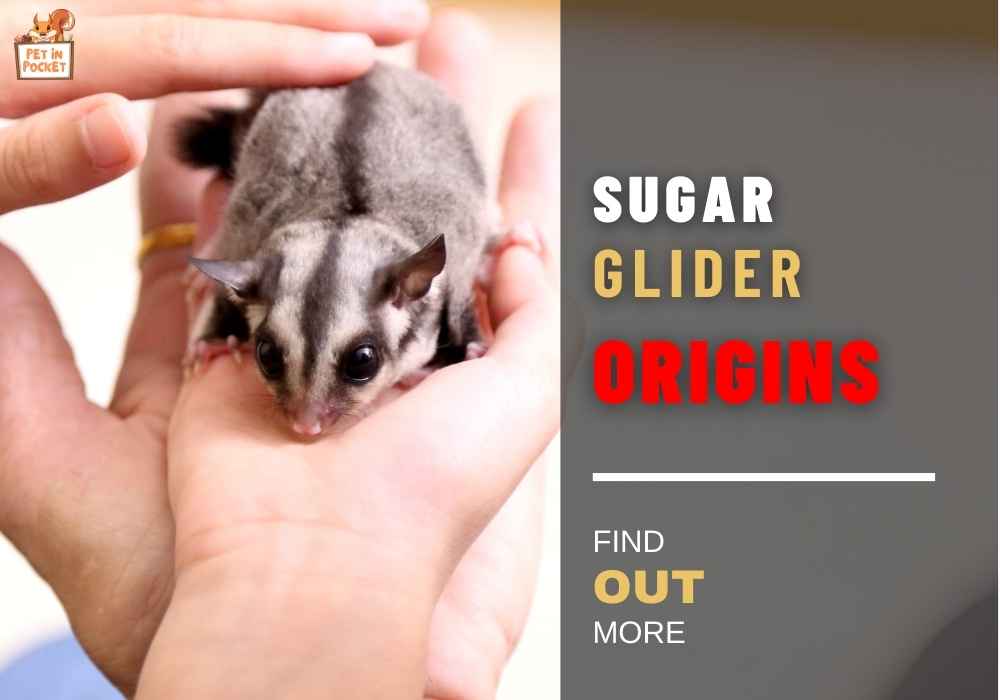
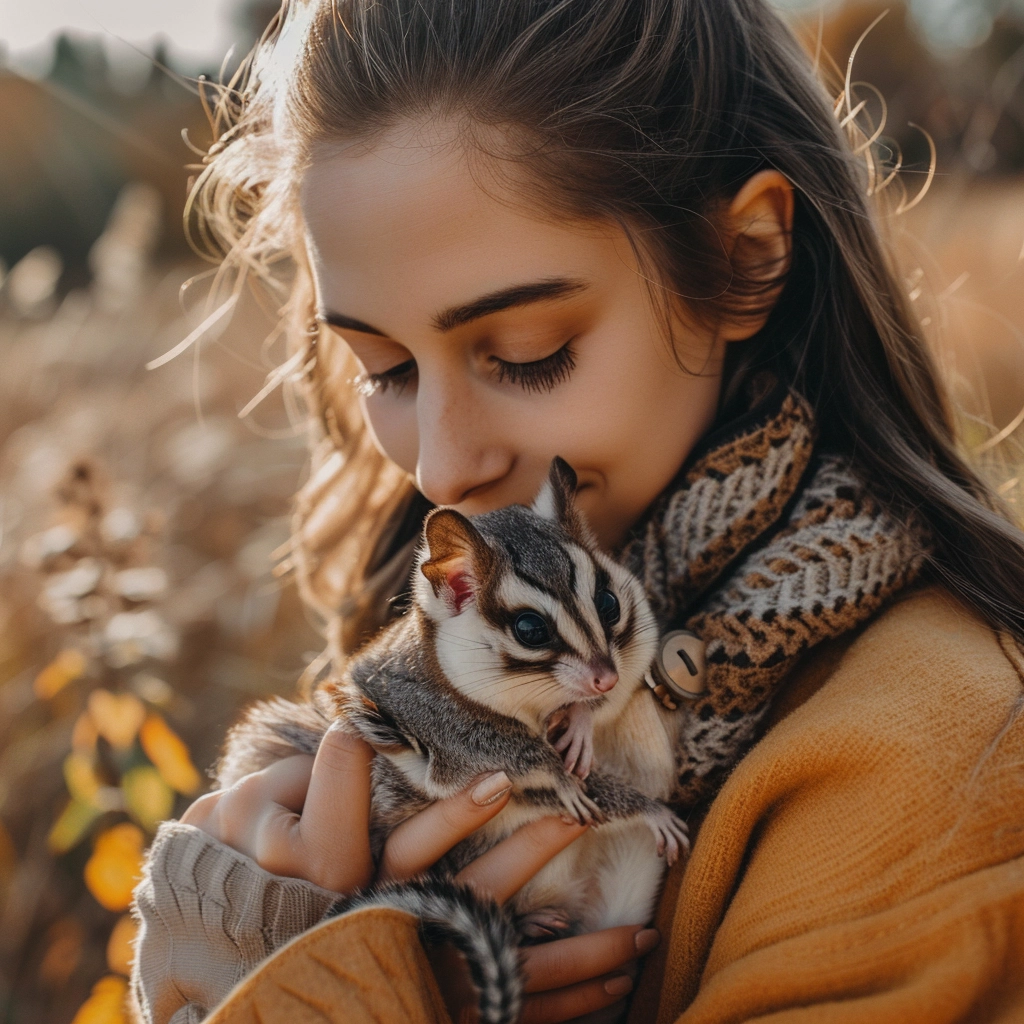
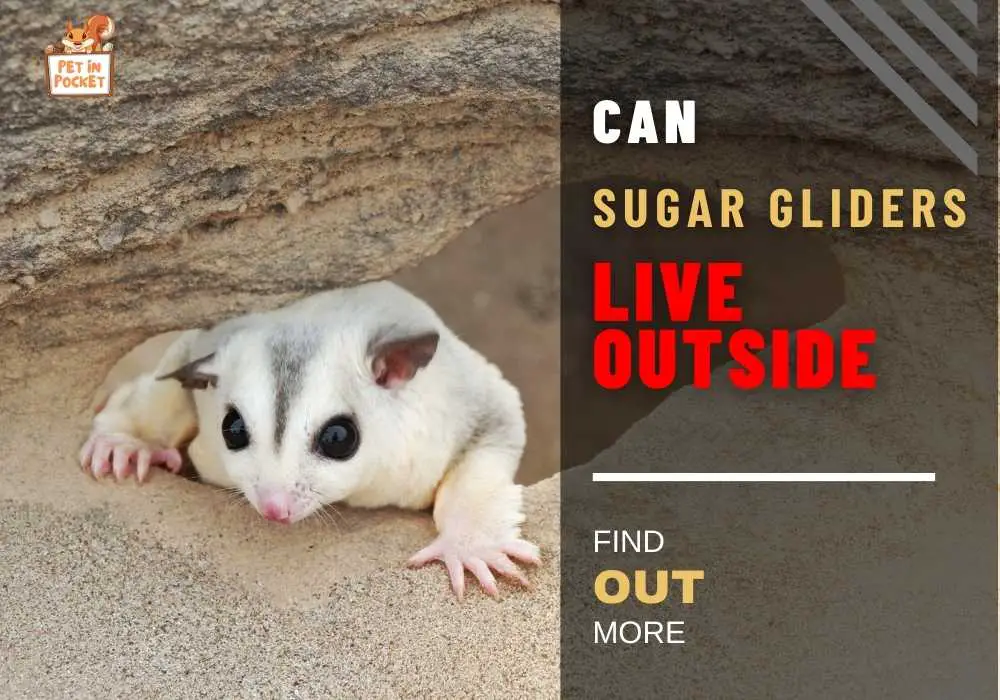
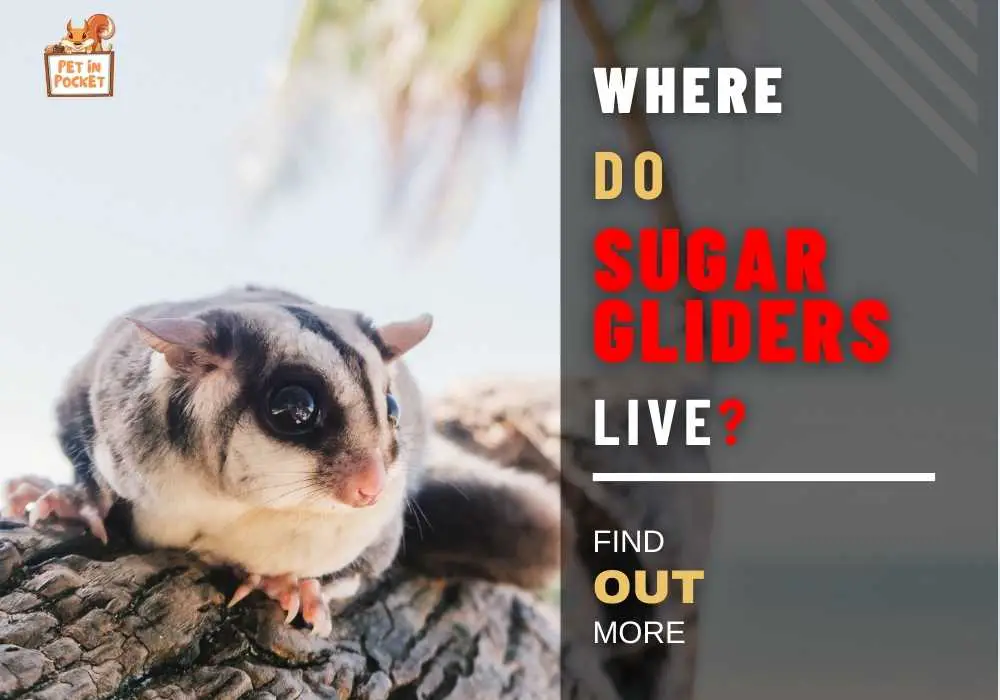
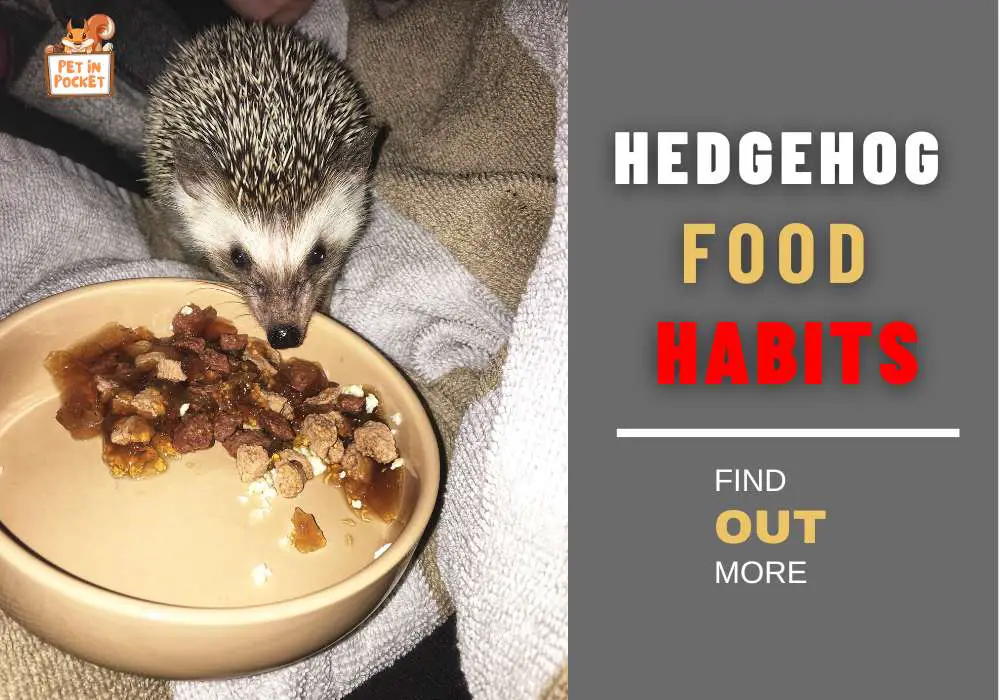
Leave a Reply